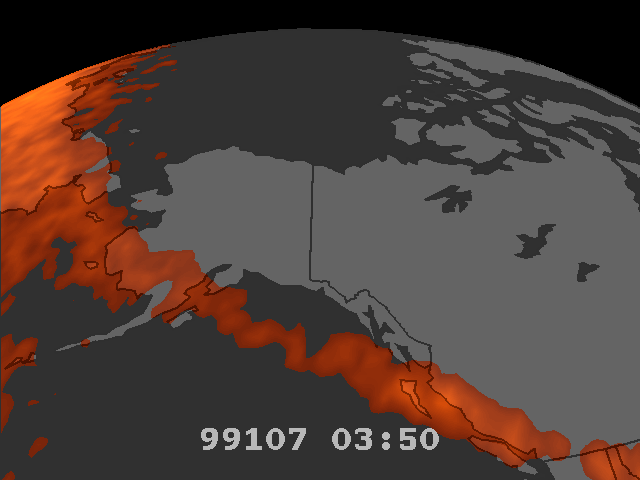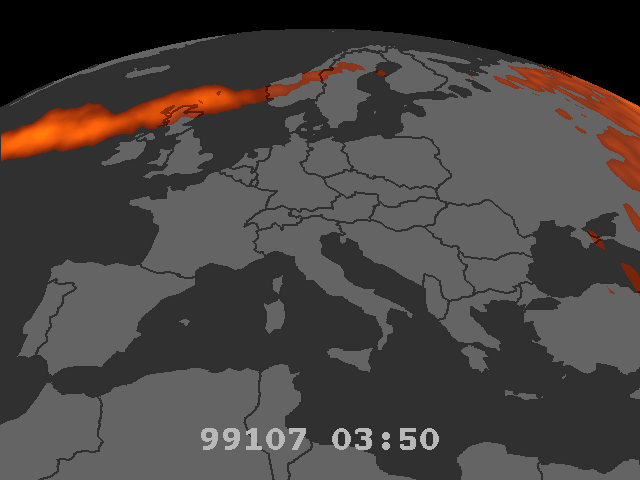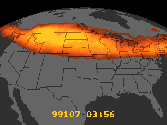POLAR's New "Weather Map Aurora" Display
The Iowa POLAR Auroral Imaging Team has developed a new auroral display expected to be popular with news and weather programs. Automatically generated and downloadable from a web site, the images would be readily available for inclusion in television broadcasts about extreme solar-terrestrial events.
The overall structure of the aurora is driven by magnetospheric processes. Thus the aurora tends to form an oval which does not co-rotate with the Earth. Rather, the continents rotate relative to the aurora. The aurora usually crosses Alaska, central Canada and northern Scandinavia. The oval extends to lower latitudes on the nightside and, since auroral events tend to occur as a result of energetic particle injections towards the Earth from the distant magnetotail, the nightside of the Earth is frequently where the action is. The most intense, unusual events are due to particle injections deep into the magnetosphere which then produce auroras over the mid- to low-latitude states.



This immediately recognizable format along with accompanying information on the storm's progression and possible impact to ground systems should help news organizations make our space weather outreach efforts more accessible to ordinary consumers.
Louis Frank and John Sigwarth of the University of Iowa will work with the POLAR project office and GSFC PAO to develop an outreach package and make these images readily available to news and weather sources for interesting solar-terrestrial events.
Click to download PowerPoint Presentation.
Comments/Questions/Suggestions: Webmaster
Official NASA Contact: Barbara Giles
| NASA Home | Goddard Space Flight Center Home | POLAR Home |
